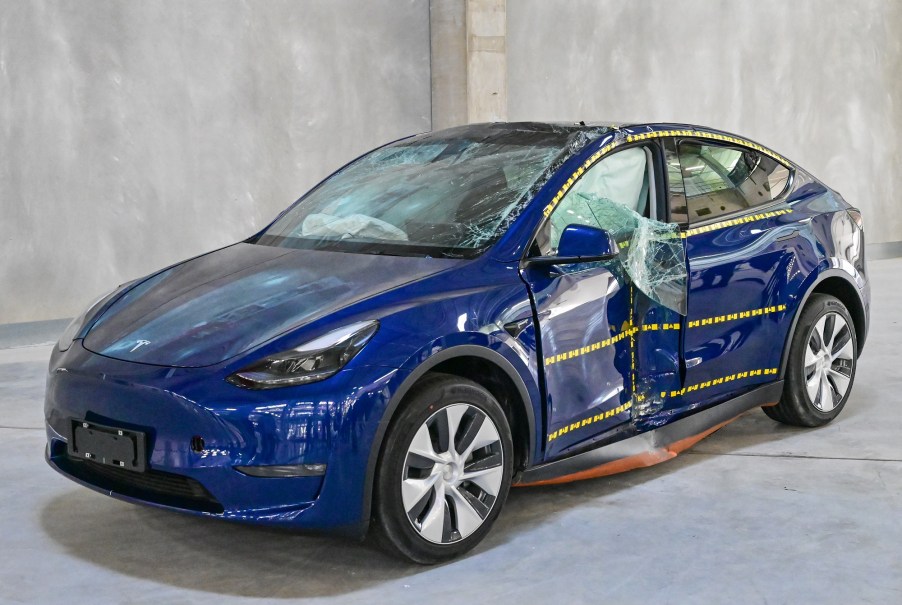
Safe EVs: They Don’t Want to Roll Over
Buying an electric vehicle (EV) over a gas-powered car is becoming more and more tenable for Americans. Communities are embracing more charging infrastructure and automakers are increasing EV driving ranges. Also, EVs are safe, with promising-looking scores. However, you might not know that one of most EVs’ principal safety features isn’t technology but because they don’t want to roll over.
Can you roll an electric car?
Yes, given the right effort, you can roll just about anything. However, EVs are inherently resistant to rolling over. Business Insider found that the Tesla Model 3 and Model Y performed much better than comparable gas-powered cars in rollover testing.
Why do EVs resist rolling?
In short, the placement of the battery architecture makes EVs safe and resistant to rolling. Battery packs are heavy, so wherever automakers place them in a vehicle alters the center of gravity. So, companies like Tesla and GM produce skateboard-style chassis. As a result, the concentration of weight is low.
When an EV is exposed to forces that usually roll a vehicle, the low center of gravity resists it. Compared to a conventional SUV with a high center of gravity, the EV is much more planted.

How safe are EVs?
EVs are inherently safe. Cars like the Tesla Model 3 have top-tier scores from Insurance Institute for Highway Safety (IIHS). Specifically, the Model 3 received a Top Safety Pick+, the IIHS’ premier rating. Also, Tesla vehicles bagged a five-star safety rating from the National Highway Traffic Safety Administration (NHTSA).
Part of the reason why EVs are so safe is the lack of an internal combustion engine (ICE) drivetrain. The absence of an engine in the front frees up space for structural safety. As a result, EVs like the Model 3 score as high as the top-performing gas-powered cars in safety testing.
Also, ICE cars require flammable liquids to operate, which is inherently dangerous. Although electric vehicles have combustible battery packs, they are no more hazardous than ICE vehicles.
Other than EVs being safe, what else do EVs do better than gas-powered cars?
In addition to resisting rollovers, electric cars boast a few advantages over conventional ICE cars. First, EVs typically cost less in maintenance. As the vehicles have fewer moving parts, there are typically more infrequent wear and tear expenses.
Furthermore, EVs don’t require as many lubricants to function. As a result, owners can drive their safe EVs without worrying about oil or transmission fluid changes.

Finally, EVs produce fewer emissions while operating. However, the vehicles draw power from the grid, which often produces energy by burning fossil fuels.
Should you buy an EV because they’re safe?
EVs are a commitment. Buying an electric car means that you can no longer fuel up and get back on the road. Instead, you’ll have a slow-charging home system or a fast-charging system that could potentially get you back to 80 percent in as little as 20 minutes. An EV might be perfect for you if you live in an urban environment where charging and range aren’t an issue.
In addition to clean operation and gas savings, EVs are safe. Business Insider reports that some of the Tesla vehicles were class-leading in rollover avoidance. So, if you are in the market for a car, EVs have some outstanding safety credentials.
Scroll down to the following article to read about a couple of disadvantages of EV ownership.
RELATED: Tesla Model 3 Could Shock You With Its Resale Value



